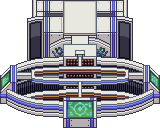Difference between revisions of "Guide to the FTL"
From NSV13
Jump to navigationJump to searchm |
|||
| Line 1: | Line 1: | ||
{{Under construction|reason=This page is not finalized}} | {{Under construction|reason=This page is not finalized}} | ||
| − | |||
| − | |||
| − | |||
== [[File:FTL_Manifold.gif|128px]] Thirring Drive Manifold Instructions == | == [[File:FTL_Manifold.gif|128px]] Thirring Drive Manifold Instructions == | ||
Latest revision as of 00:34, 27 March 2023
 Thirring Drive Manifold Instructions[edit | edit source]
Thirring Drive Manifold Instructions[edit | edit source]
- Pylon Control:
- Contains information about the various Pylons linked to the machine
- Toggle Power: Activates/Deactivates the Linked Pylon, starting to spin it up
- Close Shield: Makes the Blast Shields close down around the Pylon, protecting you from electrical shocks at the cost of increased nucleium draw.
- Manifold Controls:
- Spool Drive: I don't know, makes the thingies go zoom and charges the FTL.
- Enable Autospool: Self-explanatory.
 FTL Pylon[edit | edit source]
FTL Pylon[edit | edit source]
- FTL Pylons use nucleium and a handful of power, as a treat, to spin up.
- Keeping pylons spinning will increase their power draw, and if they are closed it will instead increase their nucleium draw.
- When the pylons are spinning the FTL manifold (main drive) goes zoomie mode
- So in short: spin up the pylons before spooling the FTL, and it will charge a *lot* faster, after that you turn the pylons off again to avoid creating a power sink.
- We must construct additional pylons (the max amount per drive is four)
- If there is not enough Nucleium being pumped into the FTL Pylon then it will start spooling down, eventually shutting down.
